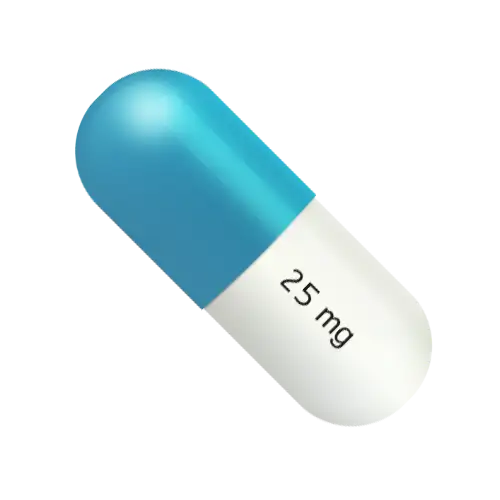Overview
Strattera, generically known as atomoxetine, is a non-stimulant medication used to treat attention deficit hyperactivity disorder (ADHD) in children, adolescents, and adults. By selectively inhibiting norepinephrine reuptake, it enhances focus, reduces hyperactivity, and improves impulse control, offering an alternative for those unsuitable for stimulant therapies.
History of Development and Approval
Developed by Eli Lilly, Strattera was approved by the FDA in 2002 for ADHD treatment. Its non-stimulant profile and efficacy across age groups, supported by robust clinical trials, have made it a key option for ADHD management.
Key Benefits
- Non-Stimulant: Ideal for patients intolerant to or unsuitable for stimulants.
- Enhanced Focus: Improves attention and concentration for better task performance.
- Impulse Control: Reduces impulsive and hyperactive behaviors.
- Continuous Relief: Provides 24-hour symptom management across various settings.
Unique Properties
Strattera’s selective norepinephrine reuptake inhibition offers sustained ADHD symptom control without the abuse potential of stimulants. Its once- or twice-daily dosing supports consistent therapy, enhancing compliance.
Comparison with Similar Medications
Compared to other ADHD treatments, Strattera offers:
- Non-Stimulant Profile: Safer for patients with substance abuse risks.
- Broad Age Range: Effective for children, adolescents, and adults.
- Steady Effect: Smooth symptom control without stimulant-related peaks and troughs.
Safety and Tolerability
Strattera is generally well-tolerated, with common side effects like nausea, decreased appetite, and fatigue typically mild and transient. Rare serious effects, including liver damage or suicidal thoughts (especially in youth), require monitoring. Regular healthcare provider follow-ups ensure safe use.
Indications for Use
Strattera is indicated for:
- ADHD: Manages inattention, hyperactivity, and impulsivity in children (6+ years), adolescents, and adults.
Dosage and Administration
Adults: Start 40 mg/day, titrate to 80–100 mg/day, once or twice daily.
Children/Adolescents (≥6 years): Start 0.5 mg/kg/day, titrate to 1.2 mg/kg/day, max 100 mg/day.
Elderly: Not typically indicated; use cautiously.
Timing: With/without food, consistent schedule.
Notes: Gradual titration minimizes side effects; do not open capsules.
Mechanism of Action
Atomoxetine selectively inhibits norepinephrine reuptake, increasing norepinephrine levels in the brain to enhance attention and reduce impulsivity and hyperactivity in ADHD patients.
Composition
Active Ingredient: Atomoxetine, drives norepinephrine reuptake inhibition.
Inactive Ingredients: Starch, gelatin, dimethicone for capsule stability.
Side Effects
Common: Nausea, decreased appetite, fatigue, mood swings, insomnia.
Rare: Dry mouth, constipation.
Serious: Liver damage, suicidal thoughts require urgent care.
Prevention of Side Effects
Start with low dose, titrate slowly, monitor for mood changes or liver issues, especially in youth. Maintain regular provider check-ins.
Contraindications
Avoid in hypersensitivity to atomoxetine, narrow-angle glaucoma, or use with MAO inhibitors (within 14 days).
Warnings and Precautions
Monitor for suicidal thoughts, liver function, or cardiovascular issues. Caution in patients with hypertension, heart conditions, or psychiatric disorders.
Drug Interactions
MAO inhibitors cause severe reactions; CYP2D6 inhibitors (e.g., fluoxetine) increase atomoxetine levels. Disclose all medications.
Overdose
Symptoms: drowsiness, agitation, seizures. Seek emergency care immediately.
Pharmacokinetics
Absorption: Rapid, peak 1–2 hours.
Distribution: Highly protein-bound.
Metabolism: Liver via CYP2D6 to active metabolite.
Elimination: Urine (80%); half-life 5 hours (poor metabolizers: 21 hours).
Dosage Forms
Capsules (10, 18, 25, 40, 60, 80, 100 mg) for oral administration.
Pregnancy and Breastfeeding
Use if benefits outweigh risks (Category C); excreted in milk, consult provider for breastfeeding.
Storage
Store at 20°C–25°C (68°F–77°F), dry, light-protected, away from children. Dispose expired properly.
Clinical Evidence
Trials confirm Strattera’s efficacy in reducing ADHD symptoms across age groups, with significant improvements in attention, hyperactivity, and impulsivity versus placebo.
Conclusion
Strattera is an effective non-stimulant treatment for ADHD, offering sustained symptom relief and flexible dosing. Adhere to prescribed regimens, monitor side effects, and consult providers for optimal outcomes.




